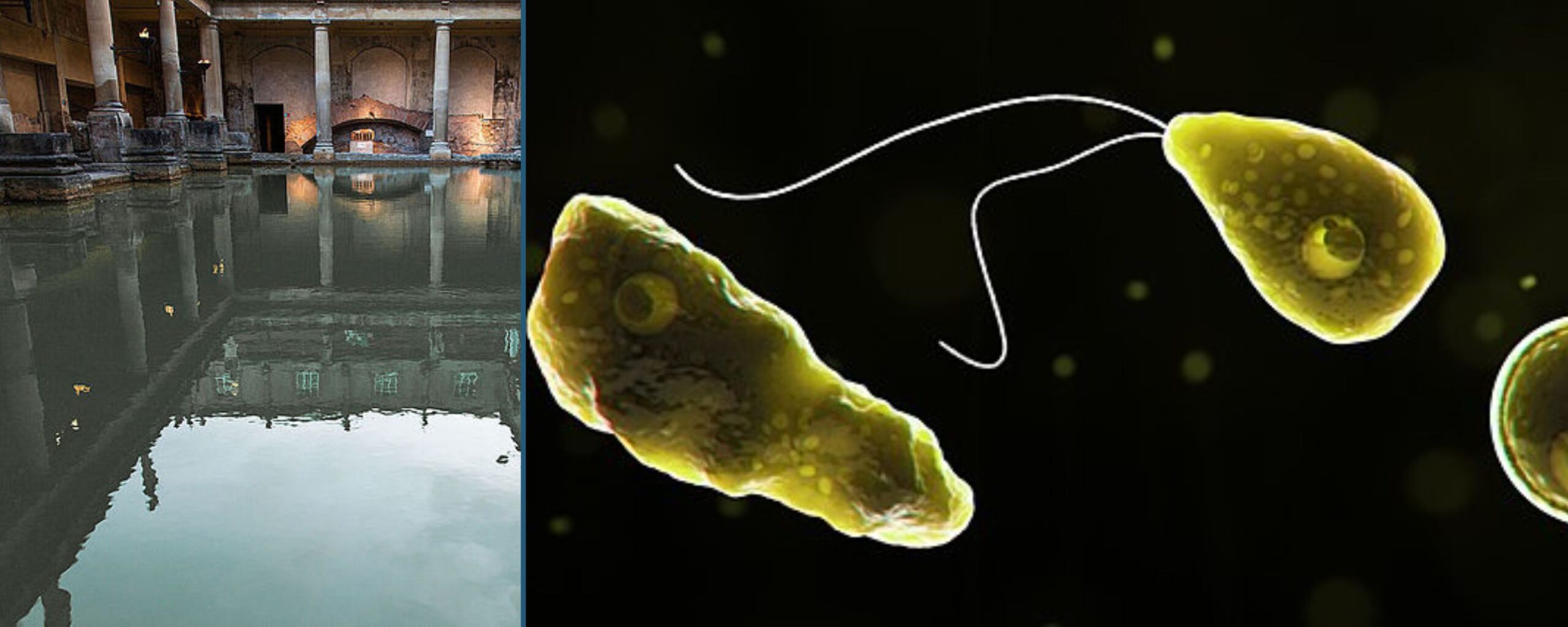

Amoebic Meningoencephalitis: All you need to know
Overview
Another case of amoebic meningoencephalitis has been reported in Kerala. A boy aged 14 from Payyoli state of Kerala is undergoing treatment at a private hospital. This marks the fourth case in Kerala with the previous cases resulting in the deaths of children.
What is amoebic meningoencephalitis?
Amoebic meningoencephalitis is an acute and chronic infection of the central nervous system (CNS). The infection is caused due to Naegleria fowleri a thermophilic ameboflagellate. [1] The amoeba is called brain eating as it infects and destroys brain tissues. [4]
Naegleria fowleri is mainly present in fresh, warm water sources such as hot springs, lakes, ponds, or tap water. Young adults and healthy children are commonly affected, but infection is also noted in older people. [1] The infection is primarily caused by nasal exposure to contaminated water.
How do you contract the brain-eating amoeba (Naegleria fowleri)?
Infection occurs mainly because of nasal exposure to water contaminated with N. fowleri. Once the amoeba trophozoites enter the nasal cavity, they migrate to the cerebrum’s olfactory nerve and olfactory bulb. Here, the pathogen begins necrotizing meningoencephalitis resulting in cerebral edema or death. [2]
This typically occurs when diving, skiing, and rarely from hot tap water or pool water lacking sufficient chlorination. [3] The disease is not contagious, it does not spread from one person to person, but only from nasal exposure to amoeba.
Symptoms of Amoebic Meningoencephalitis
The incubation period is believed to be 10-15 days and the symptoms begin within 15 days of exposure and are much like the symptoms of meningitis, [3]
- Fever
- Trembling
- Nausea
- Headache
- Mental confusion
- Stiff neck
- Seizures [2]

Diagnosis of Amoebic Meningoencephalitis
For diagnosis, a healthcare provider commonly recommends a spinal tap test which is also called lumbar puncture. The test involves the retrieval of cerebrospinal fluid (CSF) and it is further examined for the presence of infection-causing amoeba.
Brain biopsy is also considered in some cases in which the tissue sample from the brain is examined for the presence of the amoeba. [3] As the infection is significantly rare it gets difficult to detect, there have been instances where the infection was diagnosed after the individual’s death. [4]
Treatment of Amoebic Meningoencephalitis
The infection is highly fatal and has a mortality rate of over 97%. As the disease progresses rapidly hence it does not allow the time for identification of potential treatments. Some reports suggest that some drugs are effective [4]
- Antifungal amphotericin B is the most common treatment of choice
- In some regions of North America patients who survived were given a combination of rifampin, amphotericin B, miltefosine, and fluconazole [3]
- Some other interventions include CSF drainage by ventricular drain, hyperventilation, and hyperosmolar therapy. [2]
- According to the experts, the best results were seen in cases of early detection and drug treatment accompanied by cooling the body beyond the normal temperature range for treating brain swelling. [3]
Prevention from Amoebic Meningoencephalitis
As the condition is extremely fatal, it is highly important to practice prevention, things to consider for preventing the infection include:
- Avoid swimming, and watersports without nose plugs in warm freshwaters, particularly the waterbodies that are still.
- Do not use neti pots or such devices for cleaning nasal passages.
- Only distilled or sterilized water must be used for cleansing and in cases of tap water it is important to, boil it before using.
- Filters labeled ‘NSF 58’, and ‘NSF 53’ may help kill pathogens
- Chlorine bleach liquid and tablets are also used in disinfecting water for cleansing sinuses.

Sanika Pande
- Medicine and Diseases
- Nutrition and Diet
















